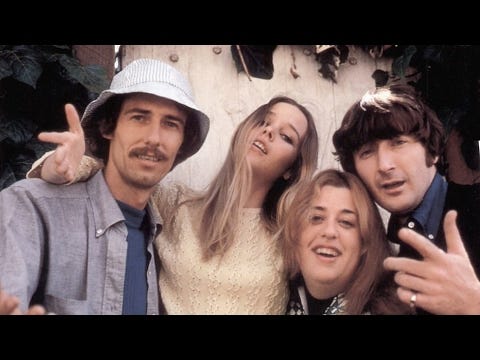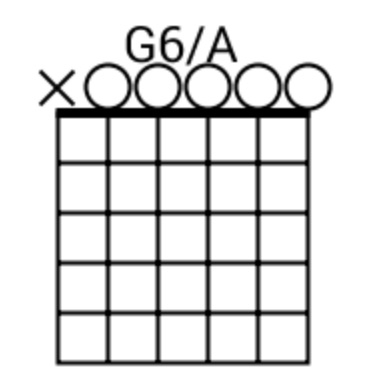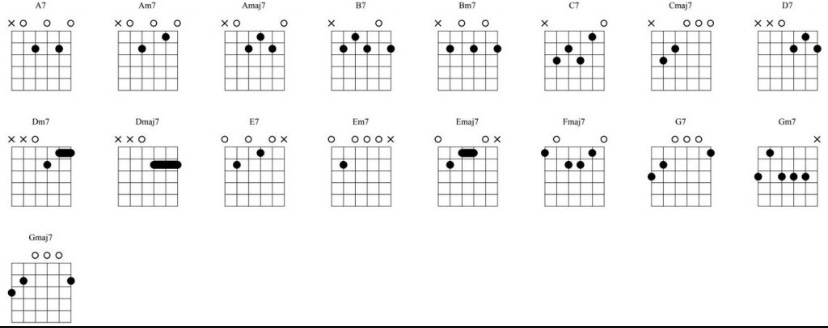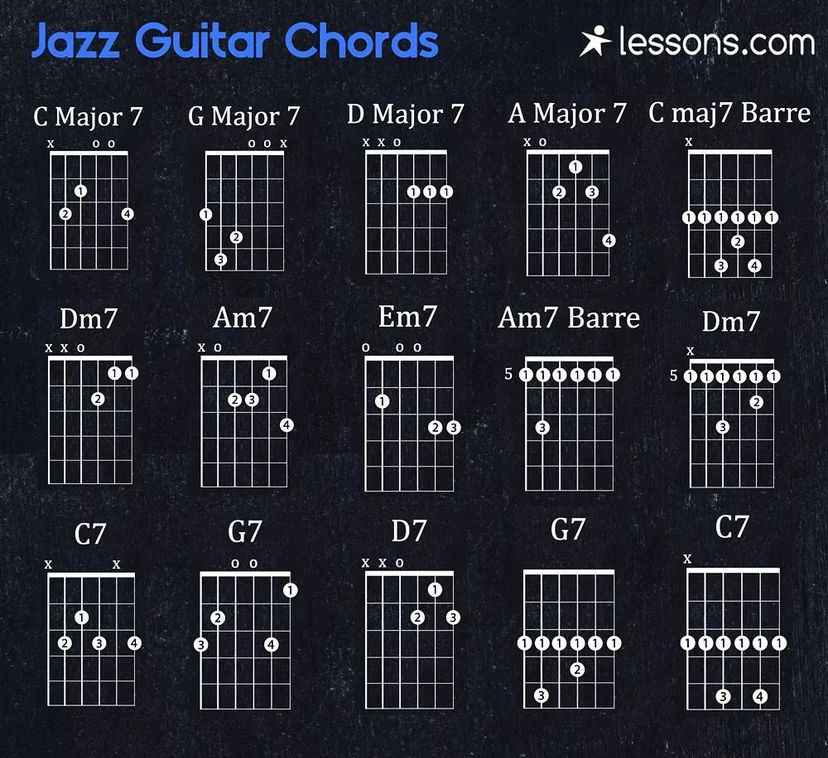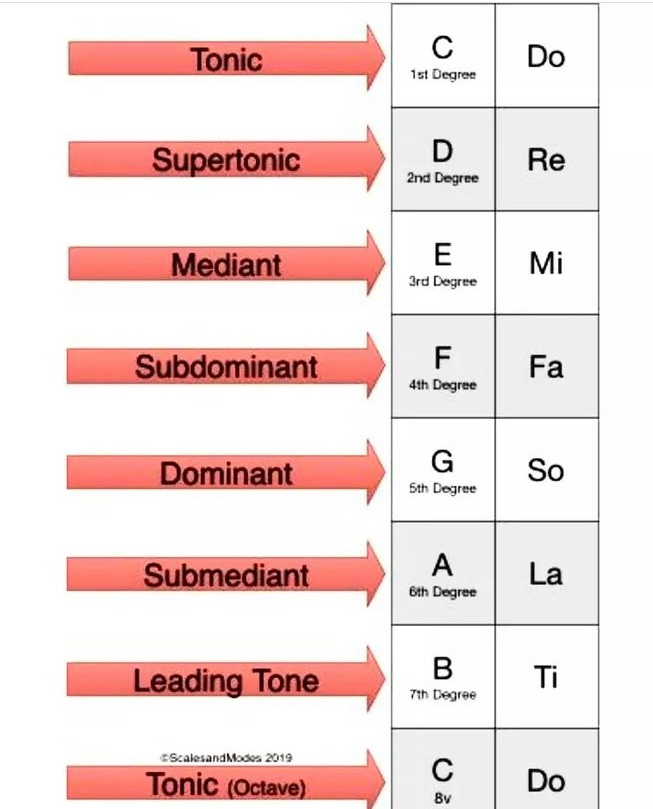Yesterday’s Bonus Round: "Dream a Little Dream of Me" is a 1931 song with music by Fabian Andre and Wilbur Schwandt and lyrics by Gus Kahn.[1] It was first recorded in February 1931 by Ozzie Nelson and also by Wayne King and His Orchestra, with vocals by Ernie Birchill. A popular standard, it has seen more than 60 other versions recorded, with one of the highest chart ratings by The Mamas & The Papas in 1968 with Cass Elliot on lead vocals. Credit: Wikipedia
Yesterday we began exploring chords beyond the basic triad (3 note chords). Today I’m going to give you a bunch (more) links and charts about 7th chords, suspended chords and chord extensions and alterations. What I’m not going to do is even attempt to “teach” anyone how to play them. Michael Acoustic has always been (and will continue to be) about gaining enough understanding about playing guitar, songwriting, recording and mixing, music theory, and related subjects to have a reasonably coherent conversation with your guitar instructor, the good folks at your local guitar shop, bandmates, other musicians, producers, and where unavoidable, peeps in the music industry.
If you had a chance to look at some of the links I placed in yesterday’s post, you may already have gained enough understanding to move forward with your guitar instructor to incorporate these chords into your playing and songwriting. I’ll post one of them again below, as well as some additional links that may be helpful or interesting.
First I wanted to share a unique chord diagram that kinda makes me laugh. I tune up every time I pick up one of my guitars. It’s just habit. I use a “Snark” tuner (not an endorsement, no financial interest, blah, blah) - they work and are reasonably inexpensive. When I’m done tuning, I strum across all the strings just to make sure the sound is “right”. If you do something similar, you may wonder what chord that is. Well, wonder no more, it’s:
What happens if you do play that low E string with the X over it? Sorta nothing, since E is clearly a note in the chord as the high E is played. You’ve only played an extra E note as the bass, but because the A note is “supposed” to be the bass note according to some rule somewhere, it’s written as “/A”, and spoken as “G6 over A”. So if you strum across all the open strings a few times and someone asks what you’re doing, you could answer in your best professorial voice, “I’m playing G6 over A in second inversion.” Which is probably mostly accurate but will likely have the added benefit of ending further questioning.
Okay, with that frivolity out of the way, here we go:
7th chords:
Not all of those are 7th chords, only the last 3 in each section. But it gives you the basic 3 you’re most likely to encounter, and importantly, demonstrates there’s more to 7th chords than just the dominant.
I like this chart better because it gives you chord diagrams, but also the chord symbols you’ll often see in chord charts with lyrics.
This one is easier to read, and although whoever created seems to claim these as jazz territory (“Berklee peep”, probably), you’ll see a lot of these in pop, rock, folk, blues, Americana and whatnot.
I think this next chart is really important. The chord formula column can be useful to plug notes into but I think the Chord Name and Example columns are more important to the common language of musicians.
One reason I think it’s important to our discussion is that I disagree completely with some of its elements. That doesn’t mean I’m right and the author of this is wrong, more like if I were playing in a band or jamming with this person and we had some sort of chord chart, lead sheet or Nashville chart we were using, we’d have to negotiate and come to some agreement on common terms and abbreviations. To clarify, I’ll tell you how I would discuss this with bandmates using this to make sure everyone agreed. First off, a lot of this is “right”, but lacks clarity. We’ll get to how the lines describing suspended chords are incomplete in a minute, or maybe next week. First we need to clarify what an “add” chord is, versus what a “chord and number” chord is.
On a chord chart, a basic triad Major chord just uses the letter or the letter and accidental, and it’s assumed to be a Major chord. C or C# or Eb are examples. Basic triad minors have a small “m” added. Cm or C#m or Ebm are examples. When a number is added, it may indicate a 7th chord of some type, such as Dominant, Major or minor. C7 (Dominant 7th chord), CM7 (Major 7th chord), Cm7 (minor 7th chord) are examples. If a different number only is added, it means all other common chord extensions are included in the chord. For example, look at the Ninth rows, Eleventh rows and the Thirteenth rows in the various flavors. In order to be a C9, the basic CMaj triad also adds a 7th note, AND a 9th note. What’s a ninth? It’s the note that is the major 2nd above the octave we’re in. Whaaaa?
Remember yesterday we laid out the CMaj scale as an octave - an 8 note scale: C,D,E,F,G,A,B,C. That last C is actually the root of the same scale, just an octave pitch higher. So the 9th is the whole tone above the C in the next higher octave, a D. The 11th is the next whole tone above that, an E, and the 13th is the next whole tone above that aF# or Gb (remember the 4th is just a semitone above the 3rd, so a whole tone results in an augmented [sharped] 4th which is the same as a diminished [flatted] 5th. The 4th and 5th are “Perfect” intervals, so we say augmented or diminished instead of sharped or flatted for them. Yeah….
At some point after a 9th, guitarists are going to run out of fingers or open strings, since a C13 would have the notes C,E,G,Bb,D,F#, and A. Pianists have 2 hands to help out. Lucky!
So as guitarists, we like “add” notes. That means you can add the note without the required intervening notes. For example, a Cadd9 only requires the basic triad, plus a 9th from the octave above.
An extreme example:
Yeah, nope. More notes than useful fingers, even with a barre. Versus:
Maybe, but I wouldn’t be happy about it…
Back to my negotiations - where the author of the chart says “add Ninth” (or Eleventh, or Thirteenth) I’d see if we can agree to just call the note as we write the chord symbol “add9” or “add11”, etc. Next I’d want to agree on chord symbols. I read “C6/9” as “C6 over 9”, meaning the 9th would be a bass note, which makes no sense because the 9th is in a higher octave. So I’d like to agree on “C6add9” since we’re already using “adds” and the “/“ is commonly used to denote a bass note in an inversion (example: D/F# - read “D over F#” is a commonly used inversion (in first inversion, but I’m not going to spend a lot of time on inversions - guitarists play a lot of inversion chords without even knowing they are). It just means the 3rd is used as the bass note, rather than the root in the triad DMaj chord, D,F#,A - the chord looks like this:
You just curl your thumb from behind the neck over the low E string to hit the F#.
Had enough? I kinda have, so let’s pick this up next week again, with the suspended chords I didn’t get to today, and I’ll leave you with some additional links!
Extensions/Alterations (repeat from yesterday)
Other stuff:
Solfège:
Try listening to the notes in different scales, then singing the “do-re-mi” song up the same scale, while trying to match each pitch
6 quick videos in a series asking “Independent or Label” - very insightful
Bonus Round: Great song using lots of “pads” by a band that’s named for an unfinished cultural “War”….
Clue’s in the subtitle!!
Cheers, and keep playing!!
Michael Acoustic


